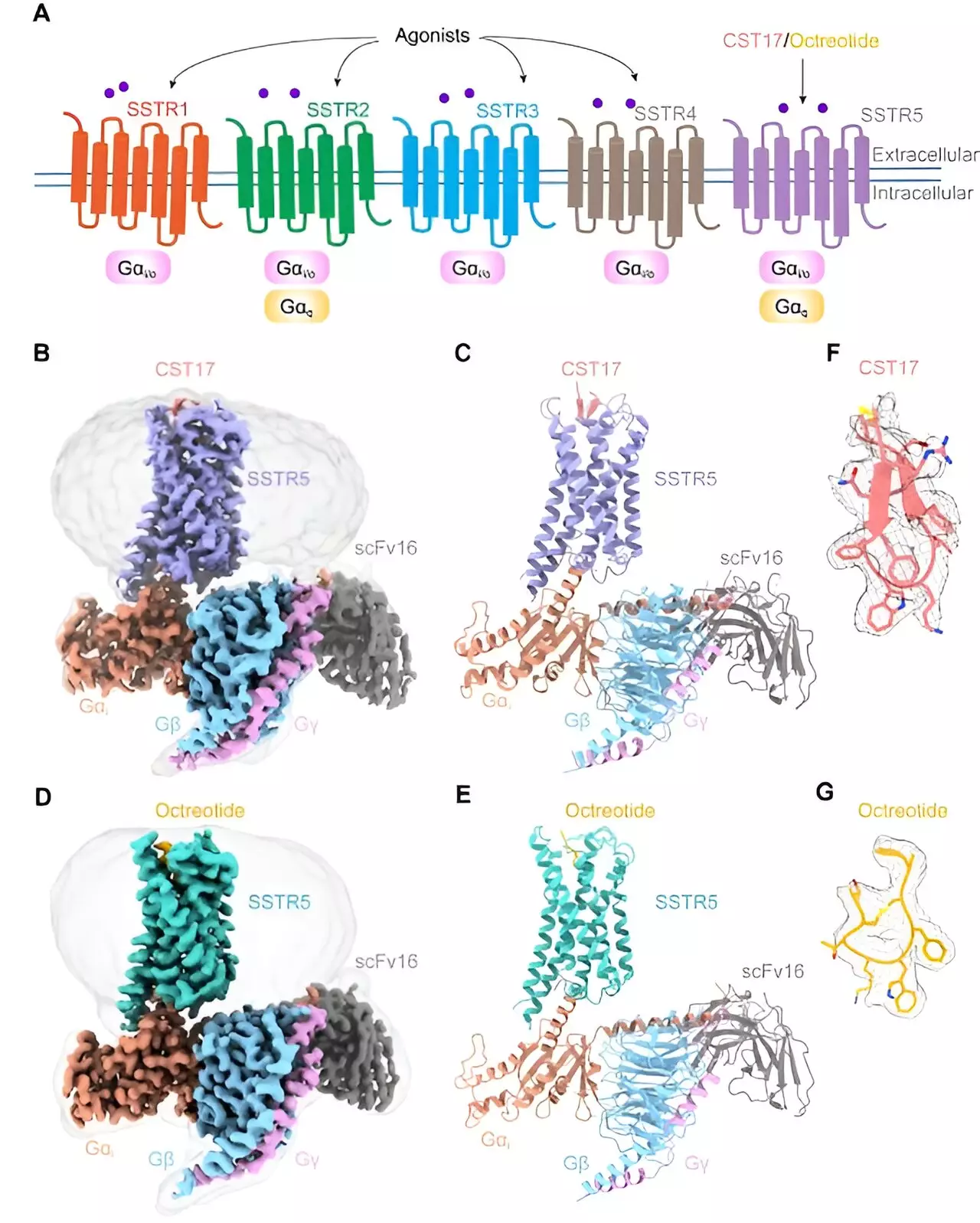Somatostatin receptors (SSTRs) are a vital group of G protein-coupled receptors (GPCRs) that are responsible for regulating hormone secretion and suppressing tumor growth. Among the five subtypes of SSTRs, SSTR5 is particularly noteworthy due to its high expression in the pituitary gland, where it controls the release of essential hormones like adrenocorticotropic hormone, prolactin, and growth hormone.
A recent study published in PNAS by a team of researchers led by Eric H. Xu and Zhao Lihua from the Shanghai Institute of Materia Medica (SIMM) of the Chinese Academy of Sciences utilized single-particle cryo-electron microscopy techniques to uncover the three-dimensional structures of SSTR5 in complex with the natural neuropeptide agonist cortistatin-17 (CST17) and the clinically-approved drug octreotide. The researchers were able to determine the cryo-EM structures of SSTR5 bound to CST17 and octreotide with high resolutions, shedding light on the molecular mechanisms underlying SSTR5 activation by these ligands.
The study revealed that the binding of CST17 and octreotide triggers a rearrangement of a “hydrophobic lock” formed by the transmembrane helices TM3 and TM6, resulting in an outward movement of TM6. This structural change facilitates the activation of G protein and initiates downstream signaling pathways. Additionally, the researchers identified distinct recognition modes of extracellular loops ECL2 and ECL3 for CST17 and octreotide, providing valuable insights into the agonist selectivity and specificity of SSTR5.
The significance of this research lies in its elucidation of the activation mechanisms of SSTR5 and its selective recognition of neuropeptide and drug agonists. The findings pave the way for the development of novel, highly selective SSTR5 modulators that can potentially minimize off-target effects. This breakthrough offers promising therapeutic opportunities for addressing a wide range of conditions, including acromegaly, pituitary adenomas, neuroendocrine tumors, and hormonal imbalances.
The study conducted by Xu, Zhao, and their team represents a significant advancement in our understanding of the molecular mechanisms involved in SSTR5 activation. By uncovering the structural details of SSTR5 in complex with key ligands, the researchers have provided a foundation for the design of targeted therapies with enhanced efficacy and safety profiles. This transformative work opens up new possibilities for the treatment of endocrine disorders and tumors, bringing hope to patients affected by hormonal imbalances.


Leave a Reply